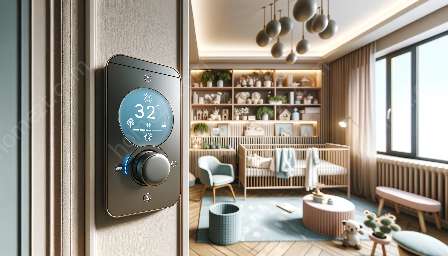Have you ever wondered about the air your little ones breathe while at home? The quality of the air around us has a significant impact on our health and well-being, especially for young children. In this comprehensive guide, we'll explore the importance of air quality, its connection to nursery temperature control, and how it affects the nursery and playroom environments. We'll also provide practical tips for improving air quality to create a healthier and safer space for your little ones.
The Importance of Air Quality
Air quality refers to the cleanliness and purity of the air we breathe. It is influenced by various factors, including the presence of pollutants, allergens, and other harmful substances. Poor air quality can lead to a range of health issues, such as respiratory problems, allergies, and even more serious conditions like asthma.
For infants and young children, who have developing respiratory systems, exposure to poor air quality can be particularly detrimental. It can impair lung function, hinder physical development, and affect overall well-being. Inadequate air quality can also disrupt sleep patterns, leading to irritability and fatigue.
Impact on Nursery Temperature Control
Effective temperature control in the nursery is crucial for creating a comfortable and safe environment for babies and young children. However, air quality plays a significant role in maintaining optimal temperature levels. Poor air quality can lead to excessive moisture and mold growth, which can impact the efficiency of temperature control systems and create an uncomfortable and potentially harmful environment for kids.
Furthermore, certain pollutants present in the air can affect the performance of heating and cooling systems, leading to increased energy consumption and decreased efficiency. This not only impacts the temperature in the nursery but also contributes to higher energy costs and environmental impact.
Effects on the Nursery and Playroom Environments
The quality of air in the nursery and playroom directly influences the health and well-being of children. These spaces should be havens of safety and comfort, but poor air quality can compromise this ideal. Common indoor pollutants, such as volatile organic compounds (VOCs) from paints, carpets, and furniture, as well as allergens and dust mites, can accumulate and pose a risk to children's health.
In addition to physical health concerns, poor air quality can also affect cognitive development and concentration, impacting children's ability to learn and play effectively. To provide a nurturing and supportive environment, it's essential to address air quality issues in these spaces.
Tips for Improving Air Quality
- Keep the nursery and playroom clean and well-ventilated. Regularly dust, vacuum, and air out the rooms to reduce the buildup of pollutants.
- Choose low-emission, non-toxic paints, furniture, and flooring to minimize the release of harmful VOCs.
- Invest in air purifiers with HEPA filters to trap airborne particles and allergens.
- Control humidity levels to prevent mold growth and maintain a comfortable environment.
- Encourage good ventilation by opening windows and using exhaust fans, especially when cooking or using cleaning products.
By implementing these tips, you can significantly improve the air quality in your nursery and playroom, creating a healthier and safer space for your children to thrive.



